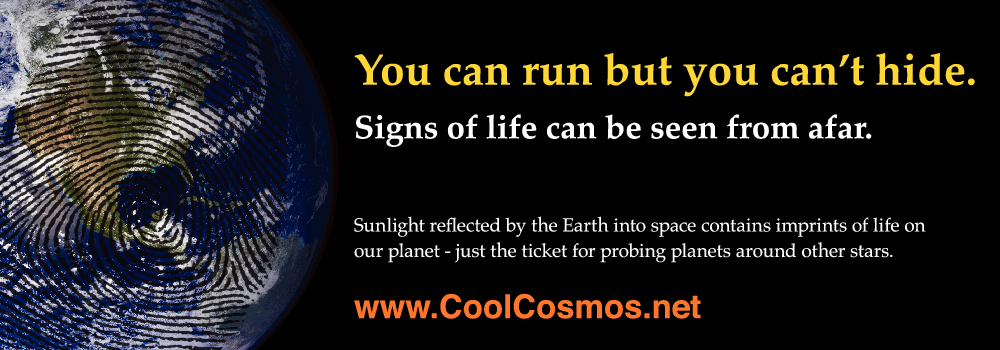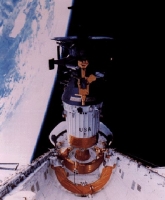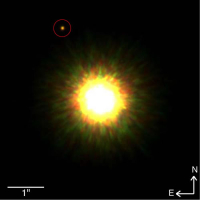![]() Listen to one Toronto astronomer's story about imaging a planet in a distant solar system.
Listen to one Toronto astronomer's story about imaging a planet in a distant solar system.
To search for life on other worlds, scientists are looking to see what kinds of clues alien astronomers might be picking up from Earth.
How easy would it be to discover signs of life on Earth? Not very – at least based on pictures like this. As seen from our nearest neighbour, the Moon, it's clear that Earth has an atmosphere with swirling white clouds and a blue colour that is suggestive of a watery ocean--but just try to spot a giraffe. Even obvious signs of human activity, like roads or cities, cannot be seen easily from the Moon.
Now breathe in. You've just sampled the one thing that would instantly tell aliens that there is life on Earth – oxygen! Bacteria and plants produce most of the oxygen in Earth's atmosphere as a by-product of photosynthesis. If photosynthesis were to shut down, the oxygen in Earth's atmosphere would gradually diminish through chemical reactions with other molecules. As far as scientists know, it takes a living planet to maintain high levels of oxygen.
But how would alien astronomers know that Earth's atmosphere contains oxygen? This task might seem especially challenging for anyone looking at Earth from outside our solar system. If Earth can be see at all from such a distance it would appear as a faint dot circling around the Sun. Yet, even the light from a dot can carry special information about its source.
To decode this information, you have to break up the light into its constituent colours. Astronomers call this "taking a spectrum". Because various molecules and atoms absorb light at different frequencies, their signatures can appear as dark lines in a spectrum. Molecular oxygen, O2, absorbs light in the red part of the spectrum and its signature is apparent in the light that Earth reflects out into space. The ozone molecule, O3, is created when oxygen reacts with sunlight, so detecting Earth's ozone would be another likely sign of life.
In 1990, the Galileo spacecraft flew past Earth on its way to Jupiter. At the time, scientists trained Galileo's instruments on our planet to see if it could detect signs of life on Earth. Galileo clearly saw the oxygen rich nature of Earth's atmosphere, and it also detected methane, which is produced on Earth by living organisms.
Now astronomers are hoping to apply the same strategy to the search for life on "exoplanets" – planets that orbit around other stars. Over 300 exoplanets have been discovered since 1995. For the most part, these planets cannot be seen directly. Rather, their existence is inferred through measurements of their gravitational influence on the stars they orbit.
Recently, researchers have been pushing telescope technology to the limits to obtain direct images of a handful of planets circling around other stars. So far these planets are all comparable in size to Jupiter or even larger. It's expected that future space telescopes will be able to image earth-like planets directly and so will be able to test those planets for the presence of oxygen and other bioactive molecules.
Select another story to learn more about how you are connected to the cosmos!
















